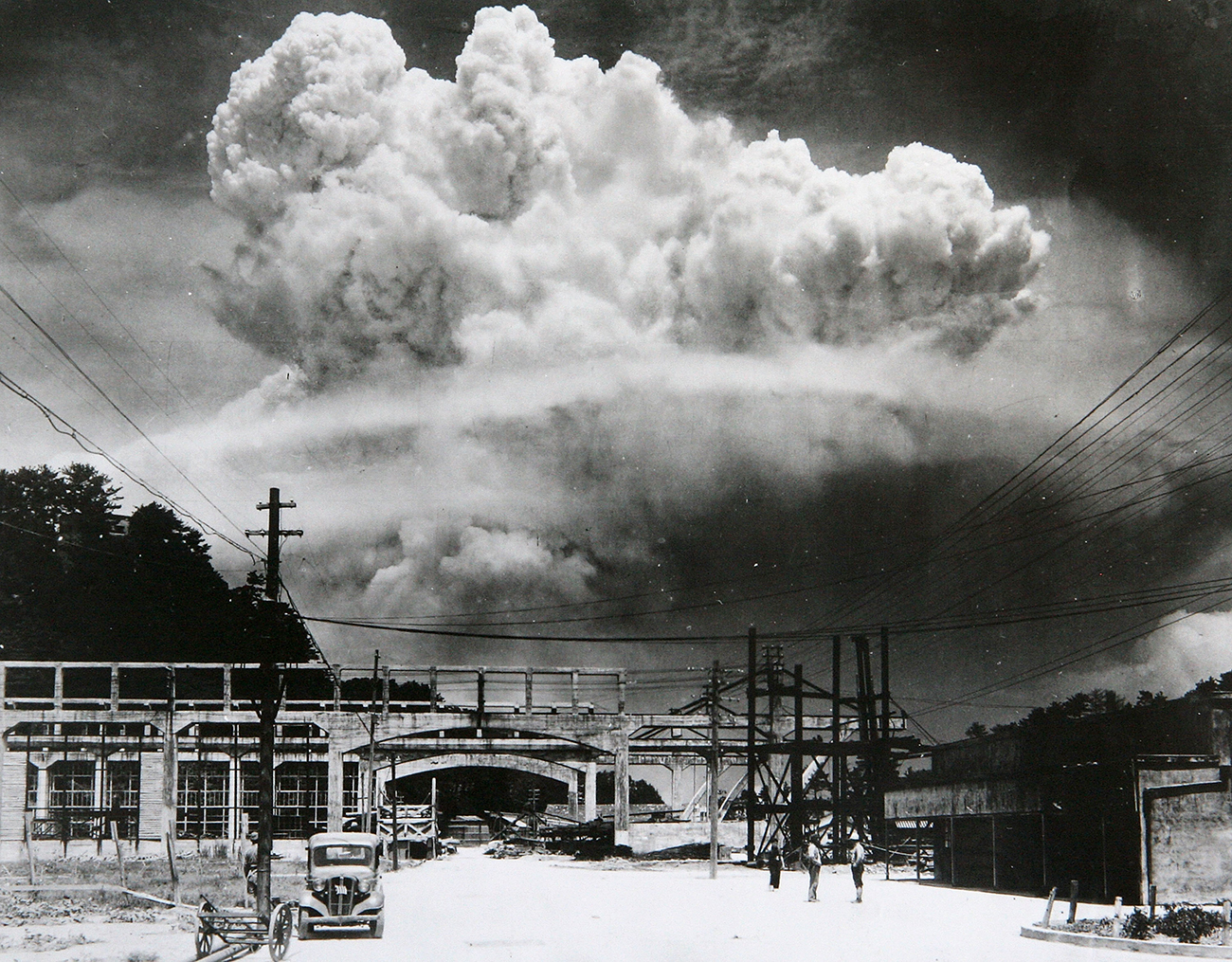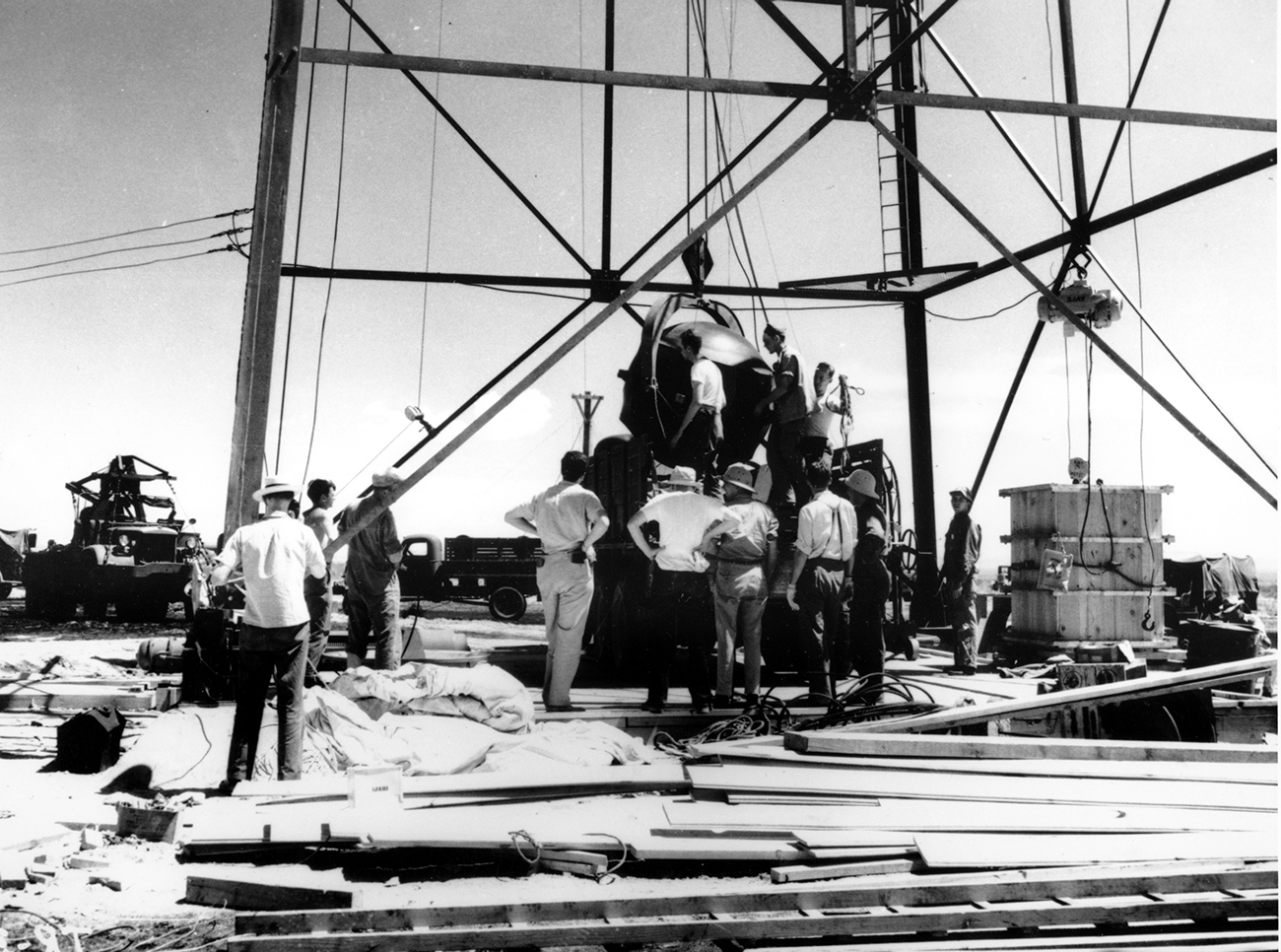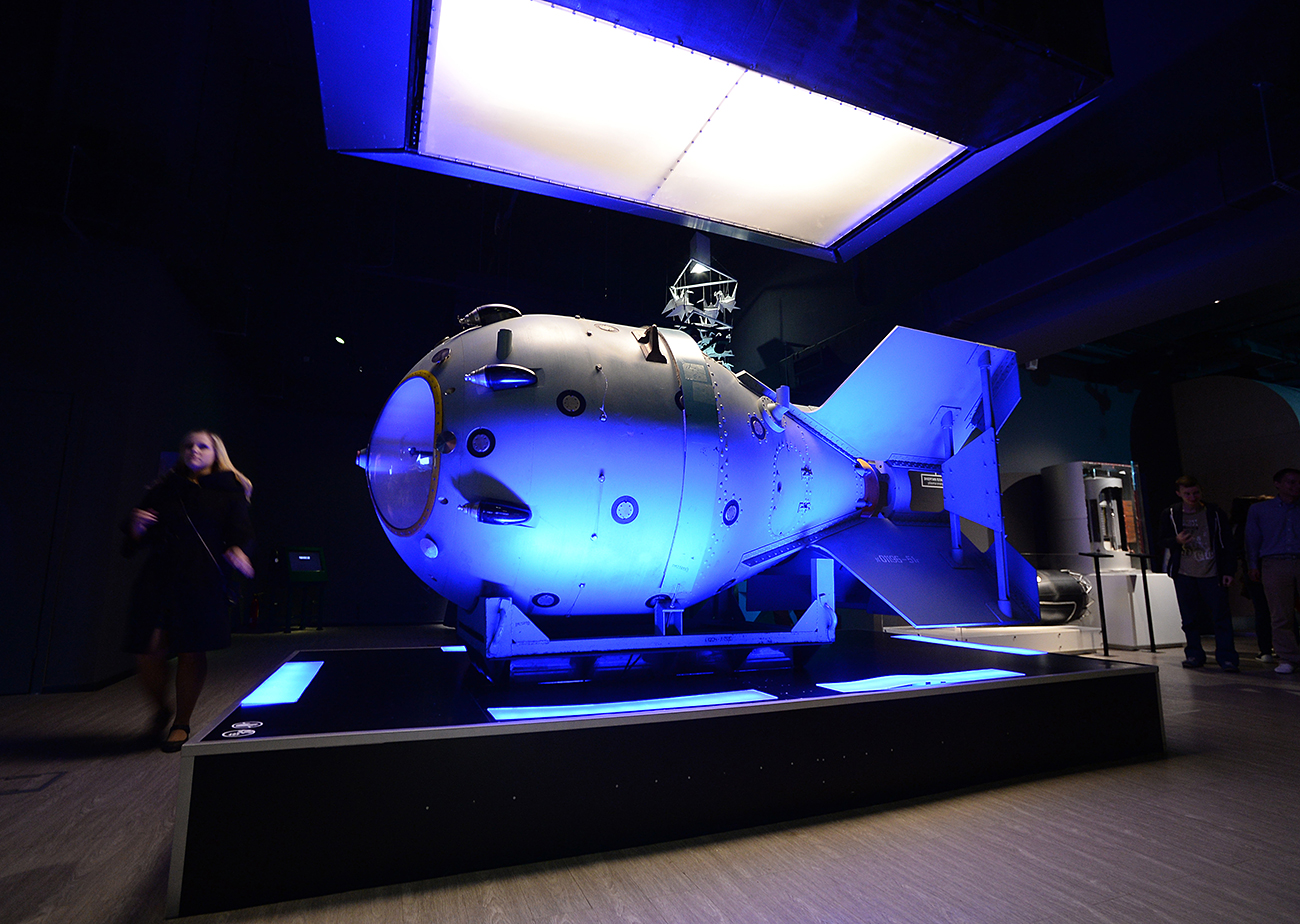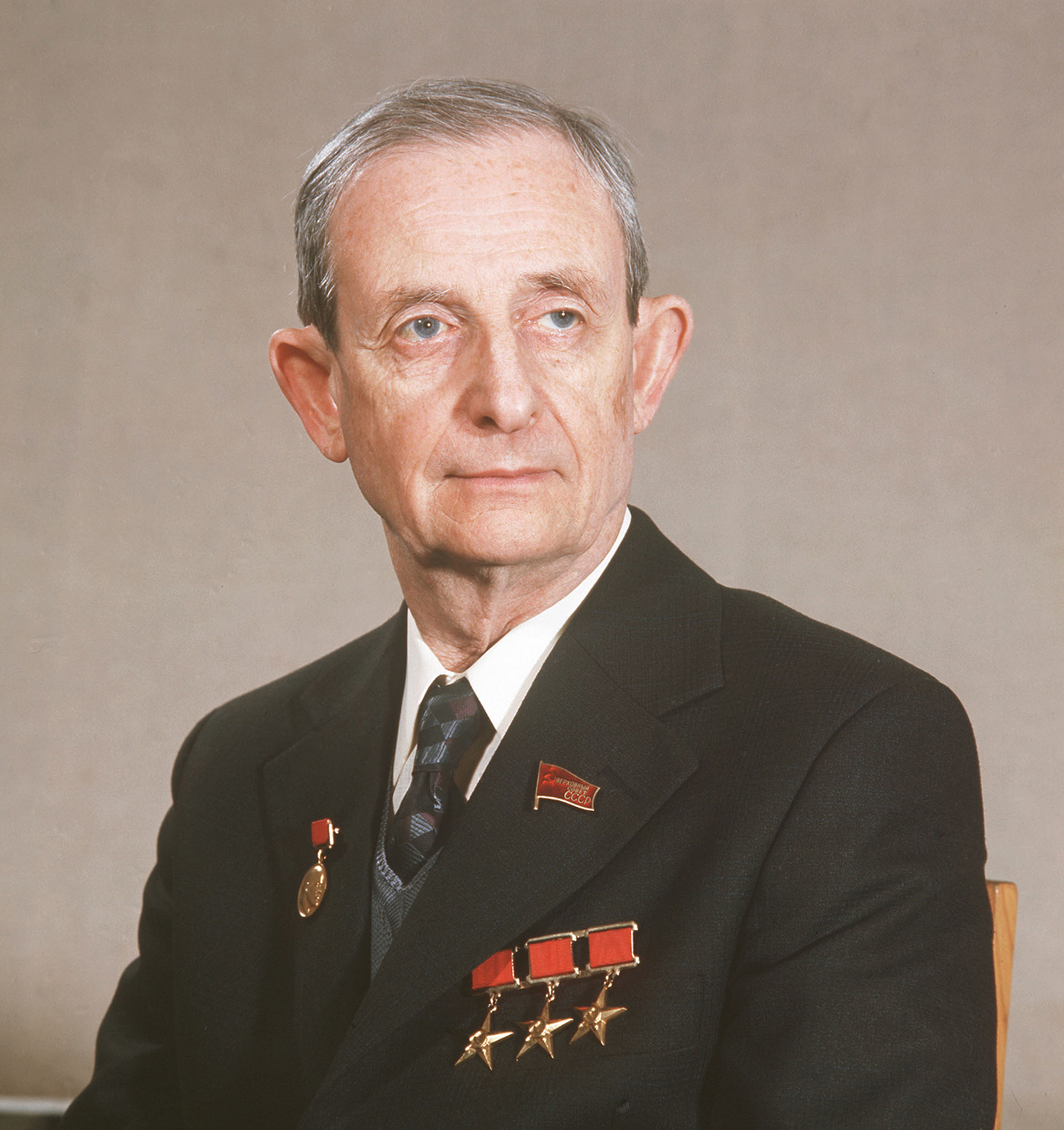
View of the radioactive plume from the bomb dropped on Nagasaki City, as seen from 9.6 km away, in Koyagi-jima, Japan, August 9, 1945. The US B-29 superfortress Bockscar dropped the atomic bomb nicknamed 'Fat Man,' which detonated above the ground, on northern part of Nagasaki City just after 11am.
Getty Images Washington demonstrated the power of the devastating nuclear weapons when it dropped two bombs on Japan. Photo: View of the radioactive plume from the bomb dropped on Nagasaki City, as seen from 9.6 km away, in Koyagi-jima, Japan, August 9, 1945. Source: Getty Images
Washington demonstrated the power of the devastating nuclear weapons when it dropped two bombs on Japan. Photo: View of the radioactive plume from the bomb dropped on Nagasaki City, as seen from 9.6 km away, in Koyagi-jima, Japan, August 9, 1945. Source: Getty Images
Nuclear weapons are a serious concern for mankind today, but their creation brought the era of large-scale world wars to an end. Mutual assured destruction compelled the superpowers to effectively lay down their arms and seek dialogue, whereas before conflict may have prevailed.
In the early years of the atomic era, the U.S. was leading the way. In August 1945 Washington demonstrated the power of the devastating nuclear weapons when it dropped two bombs on Japan, sending a warning to countries outside the Western bloc in the process. However, the situation changed on Aug. 29, 1949 when the Soviet Union tested its own nuclear weapon.
 Scientists and workmen rig the world's first atomic bomb to raise it up into a 100-foot tower at the Trinity bomb test site in the desert near Alamagordo, N.M. in July 1945. The first atomic bomb test, known as the Manhattan Project, took place on July 16. Source: AP
Scientists and workmen rig the world's first atomic bomb to raise it up into a 100-foot tower at the Trinity bomb test site in the desert near Alamagordo, N.M. in July 1945. The first atomic bomb test, known as the Manhattan Project, took place on July 16. Source: AP
The idea that the colossal energy released when the uranium atom was split could be used for military purposes was first mooted by physicists in the late 1930s. The pioneers were the Germans, who made more advances than other countries in developing the theoretical basis for the nuclear program. The German atomic project was already up and running in the summer of 1939. Physicists who fled Germany after the rise of Hitler quickly realized what the successful conclusion of the project could lead to. The Germans had to be pre-empted - and the sooner the better.
In August 1939, U.S. President F.D. Roosevelt was handed a letter from the distinguished scientist Albert Einstein. The Nobel Prize laureate in physics drew the president's attention to the fact that the Nazis were conducting research to develop a nuclear weapon and proposed that implementation of a similar project should begin in the U.S. In the subsequent two years, large-scale work was launched in the U.S., significant funds were invested and some of the greatest minds of the time, including Niels Bohr and Edward Teller, were recruited
The USSR knew full well about all of this. Soviet physicists were aware of the work of their foreign colleagues. Soviet intelligence did not sit idly by, either. In June 1940, they had a close eye on the American’s early research into uranium-235. A year and a half later, when the Great Patriotic War had already begun (following Germany’s invasion of Russia), even more alarming news arrived: Britain could develop a nuclear weapon as early as 1943. This meant that the Germans, whose troops were already nearing Moscow, must also be close to possessing a primed nuclear weapon. The Soviet Union was seriously lagging behind in the nuclear race.
 Visitors at the presentation of a multimedia installation specially created by the Rosatom Corporation to mark the 65th anniversary of the RDS-1 Soviet atomic bomb. Source: Maksim Blinov/RIA Novosti
Visitors at the presentation of a multimedia installation specially created by the Rosatom Corporation to mark the 65th anniversary of the RDS-1 Soviet atomic bomb. Source: Maksim Blinov/RIA Novosti
Information about the successful advances of Western countries in the development of a nuclear weapon was pouring into the Kremlin. Joseph Stalin rapidly realized it was a vitally important issue for Russia. His verdict was unambiguous: "We don't have the bomb: we're working badly!" The Germans were halted outside Moscow, and a breakthrough in the war was soon to follow. But no one could guarantee the situation would not change if the Germans got their hands on the super-weapon. The achievements of the Americans and British were also viewed with alarm: having acquired the atomic bomb, they could overcome Hitler on their own and subsequently threaten the Soviet Union.
In September 1942, the USSR leadership authorized the founding of a specialist laboratory to work on the nuclear project. It was effectively the start of the history of the Soviet atomic program. It was staffed by a small but highly accomplished group of physicists under the overall leadership of Igor Vasilyevich Kurchatov, who is now regarded as the father of the Soviet atom bomb. The intelligence services cooperated closely with the scientists. The Soviet spy network in the U.S. had a complete picture of the progress of the American atomic project, and even knew the locations of the main research center. Significant assistance was also provided by American nuclear physicists sympathetic to the USSR. Thanks to them the blueprints for the American bomb were already on Kurchatov's desk two weeks after it was created in 1945.
 The American and British military drew up plans for a possible war against the USSR. Photo: Yuly Khariton, a Russian physicist working in the field of nuclear power. Source: Valentin Cheredintsev/TASS
The American and British military drew up plans for a possible war against the USSR. Photo: Yuly Khariton, a Russian physicist working in the field of nuclear power. Source: Valentin Cheredintsev/TASS
Germany was crushed without the use of nuclear weapons. The atom bombs the Americans dropped on Hiroshima and Nagasaki in August 1945 were by and large symbolic. It was Washington's way of proclaiming to the whole world that it had the super-bomb. The message was directed above all to Moscow. After the end of World War II, the former allies in the anti-Hitler coalition found themselves on different sides of the barricades. The American and British military drew up plans for a possible war against the USSR. They proposed the bombing of major Soviet cities using nuclear weapons.
This could only be avoided through the elimination of the American nuclear monopoly. Two weeks after the destruction of Hiroshima a special committee was established on Stalin's orders to coordinate all the work on the atom bomb project. It effectively meant the creation of a super-ministry with enormous resources and emergency powers. It was headed by one of Stalin's closest associates, Lavrentiy Pavlovich Beria.
Under his direct leadership, a new industrial sector was born in the USSR in the space of a few years - the atomic industry. Uranium enrichment plants, reactors, centrifuges and factories to make bombs were set up in a short period of time. In Siberia and the Urals, new industrial complexes were built deep in the mountains, from which hundreds of tonnes of solid rock were extracted. Around them whole cities sprang up excluded from maps. Only people connected to the atomic program knew of their existence.
The American leadership was convinced that the USSR would acquire nuclear weapons no sooner than 1954. A nuclear weapon test at the Semipalatinsk range in 1949 came as an unpleasant surprise for the U.S. The Soviet Union managed to destroy the U.S. nuclear monopoly, and in doing so laid the foundations for the international security that the world order rests on to this day.
Alexander Vershinin - doctor of historical sciences, lecturer in history at Moscow State University, senior research fellow at the Governance and Problem Analysis Center.
If using any of Russia Beyond's content, partly or in full, always provide an active hyperlink to the original material.
Subscribe
to our newsletter!
Get the week's best stories straight to your inbox